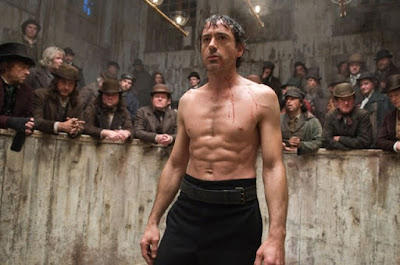Composition
What is Shot Composition?
In Film terms, shot composition refers to the organization of elements in a frame. Every image should have a single story to tell. The purpose of composition is to direct your viewer's eye to the central point or "story" in your scene. Regardless of the particular subject, composition of the frame is important. You want to present a picture to your audience that is unified, shows the relationship between the elements in the frame, and is aesthetically pleasing. Everything in a frame is important, not just the subject!In this post, I aim to explain, give examples of different methods of shot composition and to explain and analyse why they have been used.
Framing
The very broad term "framing" refers to the way a shot is composed, and the manner in which subjects and objects are surrounded ('framed') by the boundaries or perimeter of the film image, or by the use of a rectangle or enclosing shape (such as a door or hallway) within the film image; also, camera angles such as low-angle and high-angle shots contribute to the framing
Example:
In the 2011 masterpiece, Drive, one of my favourite scenes, the scene where Driver and Irene first meet, is framed incredibly well (especially around 1:05). Irene occupies the left hand side of the frame, while a mirror is on the right. In the mirror, we can see a photo of Standard and Benicio, while Driver is seen through the mirror. Through the clever framing, Winding-Refn is slowly revealing the plot and conflict that will soon emerge - Irene's battle between reality and her desires. The whole scene is beautiful, from the initial attraction the audience feels through the slow panning to Irene's pining for Driver via the shots that stay on for just one or two seconds more where no dialogue is uttered between the two. A masterclass in framing.
Rule of Thirds
The Rule of Thirds dictates that if you were to divide a TV screen into thirds using lines, where these lines intersected are the points where the eyes are most naturally attracted to. Therefore, many filmmakers implement this rule into their films and place the most important things in the shot on these intersecting lines.
In the Oscar winning 2010 film, The King's Speech, the Rule of Thirds is used. The microphone is the subject of the scene and so when we split the screen in accordance with the Rule of Thirds, it always occupies where the lines overlap, and so we are more drawn to it, almost engrossed by it.
Depth of Field
In laymen’s terms, depth of field refers to the part of your shot that is in focus. If all or most of the shot is in focus, you have a deep depth of field (also called deep focus.) If only a part of your shot is in focus, you have a shallow depth of field (also called shallow focus.)Example - Shallow Focus:
In this still shot taken from Drive, a film you're probably well aware of in this blog, shallow focus is used. This is from the opening scene, where Driver is on a heist, waiting on his clients to return from a bank robbery.This is done so that the audience is focused on Driver, heightening the intensity of the scene that is created by time running short on the clients to get to the car.
Example - Deep Focus:
How can you even mention deep focus without mentioning Citizen Kane in the same sentence? Welles employed the deep focus shot throughout Citizen Kane. In this shot, Kane is still a boy and under the custody of Mrs. Kane. We see Kane through a window pane throwing snowballs while Mr. Thatcher talks over a deal with the parents of Charles Kane. Normally, the conversation would be the subject of the shot; however, by employing the deep focus shot, we are made to sympathise with Kane as he has become the subject of the conversation, which the deep focus shot helps to convey.
Focus Pulls
The focus pull is a creative camera technique in which you change focus during a shot. Usually this means adjusting the focus from one subject to another.
Example:


